“Win on Sunday, sell on Monday.” It’s an adage that car manufacturers have lived by for years. But what if winning on Sunday also meant saving the planet from climate change on Monday? That’s what Formula E hopes to solve – and that’s what makes it different from every other motorsport.
Motorsports might be fun to watch but there’s no getting away from the fact that a big reason they exist is that car companies want to sell more cars. Of course, there are huge marketing advantages to being successful in motorsports, but the other reason manufacturers get involved in motorsport is to help test and develop emerging technologies that they can then use in their production cars.
Indeed, many of the biggest innovations (especially safety innovations) in modern motoring have come from motorsports. Disc brakes, ABS, all-wheel drive, laser headlights, rearview mirrors, multi-link suspension… All were forged in the crucible that is motorsports and then found their way into production cars.
These days, the area into which car manufacturers are pouring their time and effort is electrification. Electric cars are the future, and the world’s car brands are currently in a bit of an arms race to improve battery and charging tech.
At the same time, big questions about the sustainability of international motorsports are being called into question. How sustainable is it to fly hundreds of people around the world to drive machines that gulp down fossil fuels around a ring?
That’s why Formula E is so different. The first single-seater racing series outside of Formula 1 to be given world championship status, Formula E isn’t only a groundbreaking electric car racing competition, but it’s also the first sport in the world to be ‘net zero carbon’ since its inception.
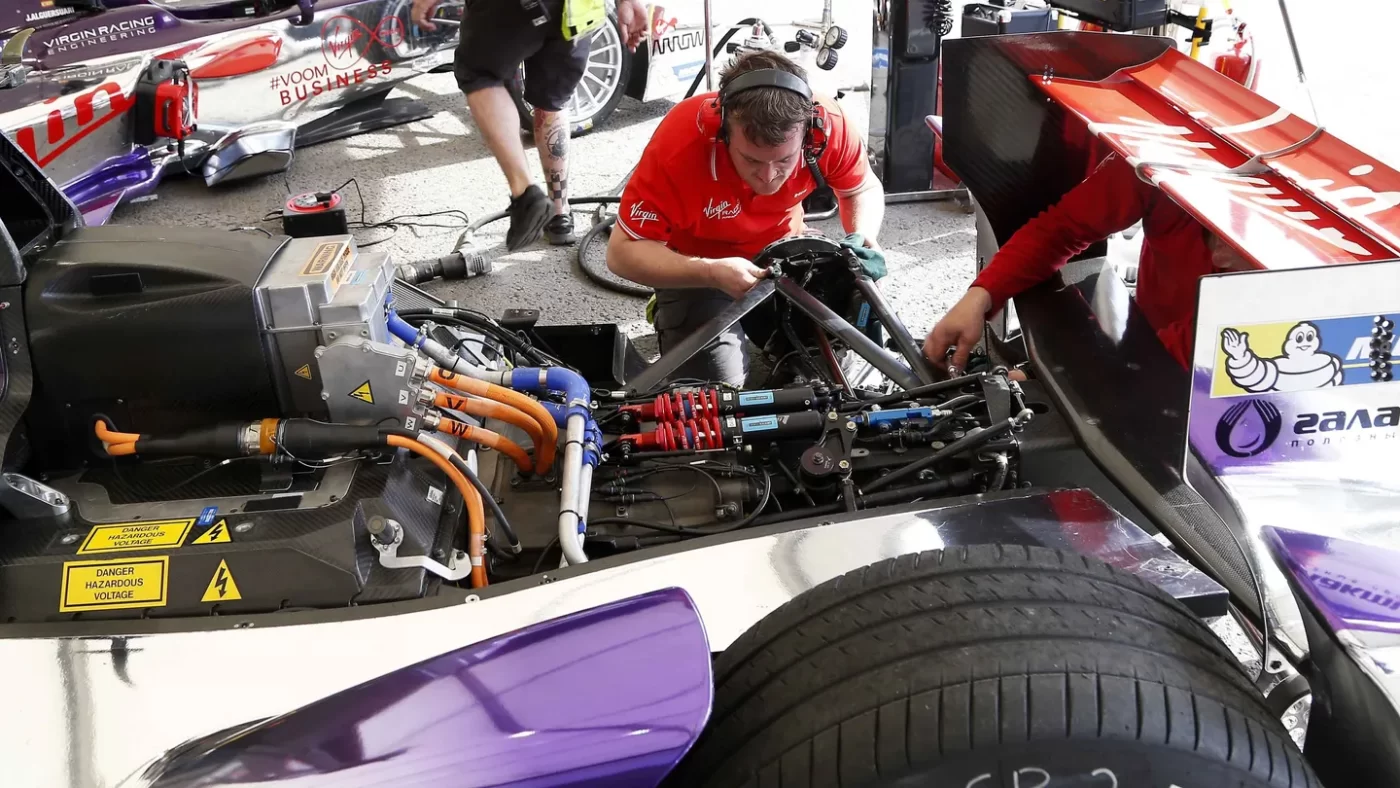
Crucially, it’s also exceptionally fun to watch – and with interest in motorsports at an all-time high, there’s never been a better time to get into Formula E.
What makes Formula E so special?
Because it’s got ‘Formula’ in the name, people naturally compared Formula E with Formula 1, but the two motorsports are actually quite different.
Firstly, unlike Formula 1, Formula E is a single-make series. Rather than every team coming up with their own car, there’s a specification chassis that all teams run, as well as a common set of tyres and battery packs – although FE isn’t a pure ‘spec series’.
The car might be the same but the most crucial bits of the car, including the powertrain, MGUs, inverters, gearbox plus the car’s software are all developed by each team, meaning there’s still plenty of variance between the cars.
It’s kind of the best of both worlds: the arms race between the teams adds enough spice to the championship, while the similarity between the cars guarantees close, fair and dramatic racing. Because of this, it’s quite a dramatic and unpredictable sport, with different pole-sitters and podium finishers in almost every race.
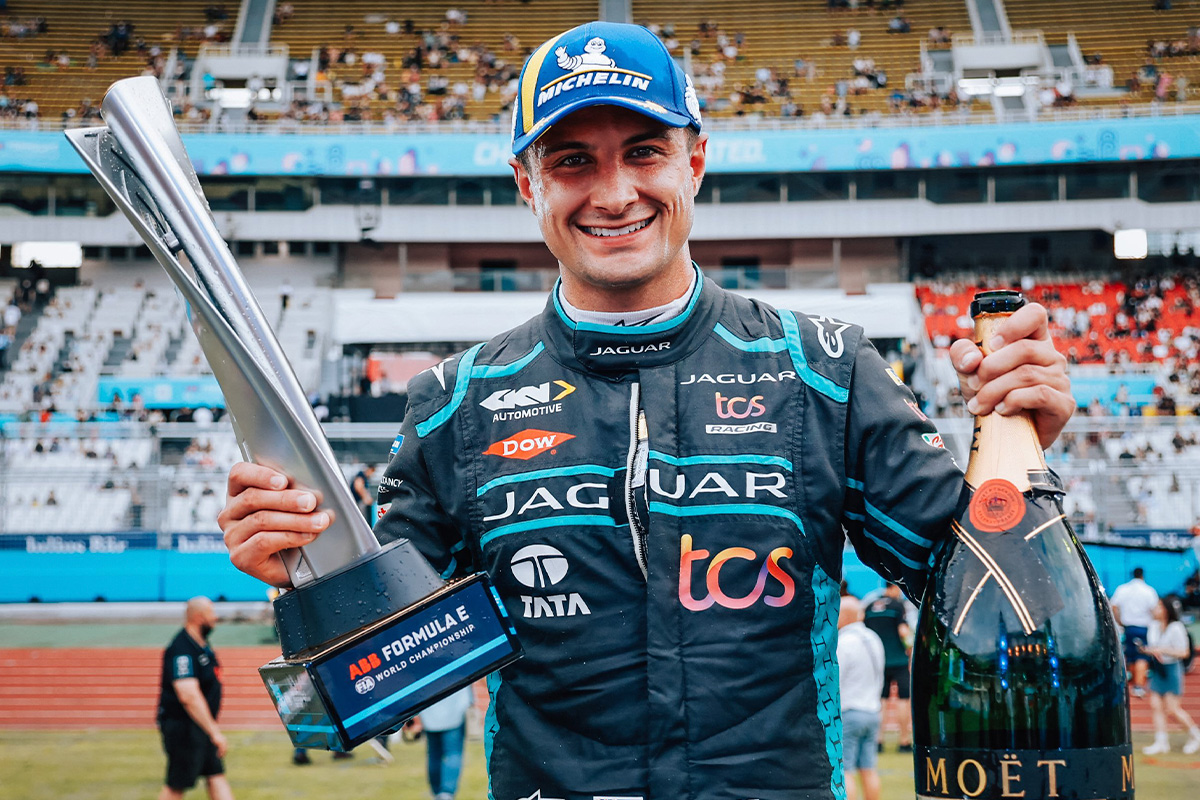
DMARGE spoke with Mitch Evans, a Kiwi racing phenom who drives for Jaguar TCS Racing in the 2022-23 Formula E World Championship, who can’t emphasise enough that Formula E is “mega racing”.
“[Formula E is] very close, very unpredictable and ultimately that’s where you want in sports. So if you’ve never watched the Championship, give it a chance and check it out – I think a lot of people will be surprised with how exciting the racing is.”
Mitch Evans
Evans, who came 2nd in the 2021–22 Formula E World Championship and who’s previously competed in GP3, GP2 and the 24 Hours of Le Mans, explains that Formula E cars handle in a way that’s radically different and very exciting compared to other racing cars.
“Torque delivery is a bit different. Instant torque is obviously, from a performance point of view, what electric cars are sort of renowned for… Also, the braking, with regeneration – that’s something a petrol engine [race car] doesn’t have. That takes a little bit to get used to,” he says.
Formula E has always been exciting, but this year, it’s become even more so. We also spoke with Jaguar’s team principal, James Barclay, who explains that the new Gen3 cars are a huge technical step forward from last year’s Gen2 cars, making them even more fun to watch:
“They’re the fastest, lightest, most efficient and powerful race cars ever built, setting the new standard as the world’s first net zero carbon race car and capable of reaching top speeds over 322km/h.”
James Barclay
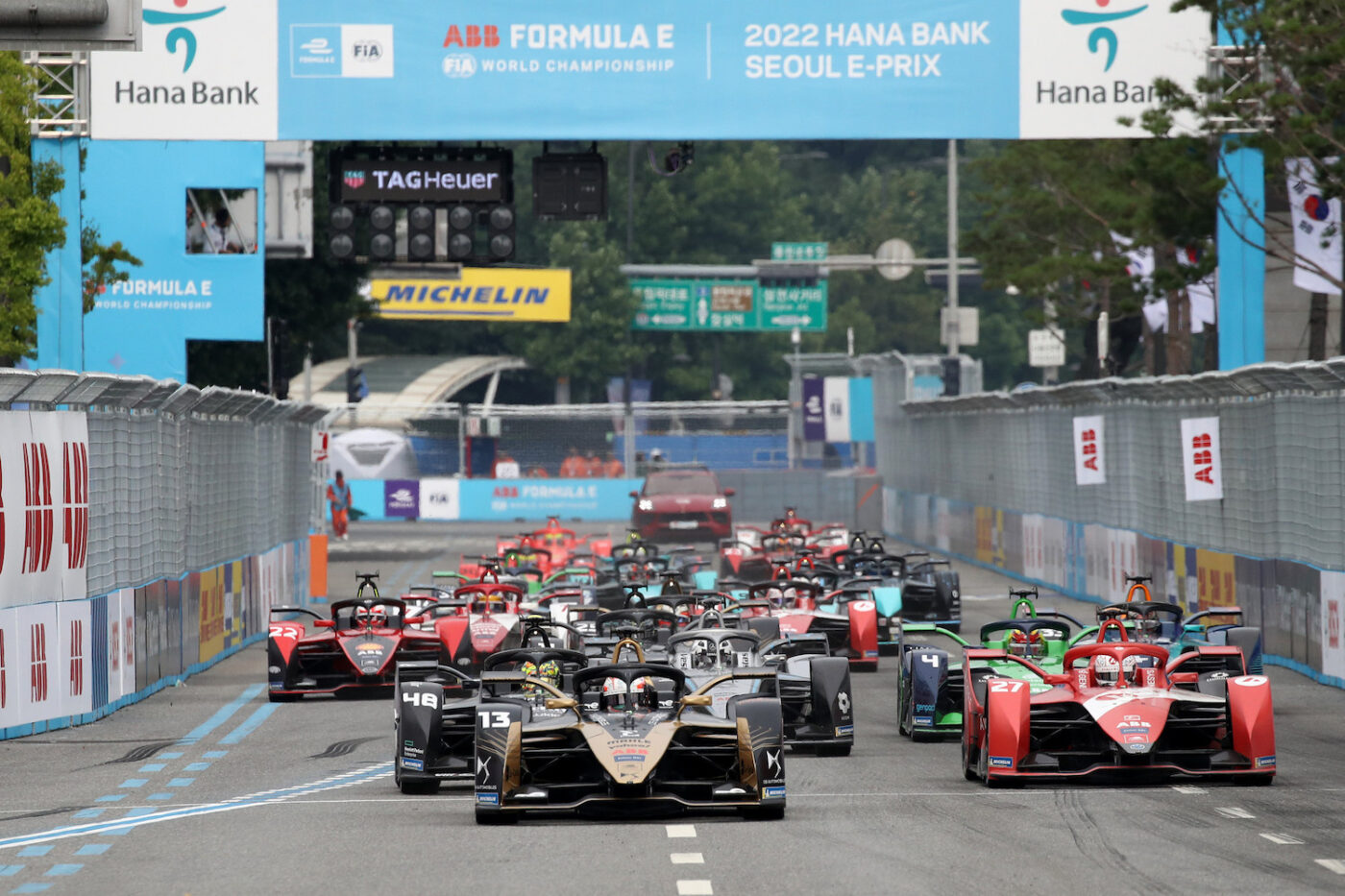
Another big difference between Formula E and Formula 1 is while most F1 Grands Prix are held on dedicated race tracks, all Formula E ePrix tracks are tight street circuits in cities like Cape Town, São Paulo and Berlin.
“In 2023, we will compete in 17 races across 12 iconic locations around the world,” Barclay explains. “Unlike traditional forms of motorsport, we transport our race cars and equipment directly from one race to the next and they do not return to our team base until the end of the season. Coupled with strict freight limits, this approach reduces the carbon footprint vs the traditional approach.”
This dedication to minimising emissions both on and off the track is a hallmark of Formula E – like most motorsports fans, I love nerding out on the technical wizardry of racing cars, but the logistical brilliance of Formula E is also pretty captivating.
It’s even stuff like staffing numbers: compared to the hundreds of staff that follow F1 teams around the globe, FE teams have a hard limit of only 30 staff on the ground for each race. That’s wild and in my opinion, helps make the racing more competitive; more honest.
Formula E is shaping the cars of the future
Of course, the really cool thing about Formula E is that it’s helping make electric cars that we mere mortals can drive even better. As mentioned above, a major motivating factor for car brands to go racing is research and development.
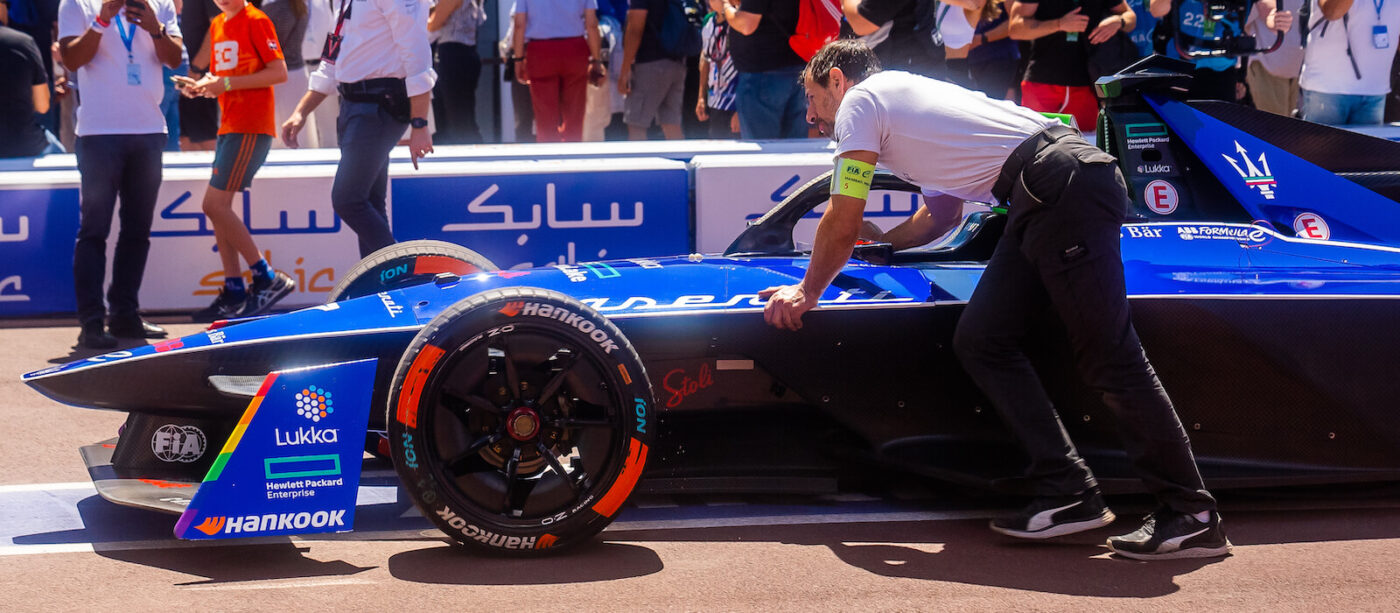
That’s why so many car manufacturers have been attracted to Formula E. Case in point: Maserati, who joined Formula E this season as the first Italian manufacturer in the sport in what is the first time the iconic brand’s name has been seen on a single-seater race car since 1958.
We spoke with Giovanni Sgro, the head of Maserati Corse – the legendary Italian brand’s racing department – who emphasises that there are some things you can only learn by going racing.
“We made the decision to get into e-mobility… So being in Formula E is an amazing opportunity to showcase not just the brand value in terms of the brand equity or what Maserati stands for as a luxury automobile brand, but to learn.”
“We don’t want to be [just] a participant in this space, we want to lead the space and Formula E although technology transfer is not 100% at this point, everything we learned from the track to off track is really going to help us develop and design high-performing electric vehicles.”
Giovanni Sgro
Sgro explains that one of the biggest opportunities for learning comes from range. The spectre of ‘range anxiety’ still looms large in the minds of many potential electric car buyers… But in the crucible of electric motorsport, Maserati is learning how to make their electric cars more efficient.
“When you’re on track and performing, you really have a limited amount of time to get to the finish line as fast as you can and beat 21 other drivers… When you really can hone in on what is happening on track from a driver standpoint, I think there’s a way to filter that information and bring it to the cars that you and I could drive one day,” he relates.

“I think that’s key in terms of really understanding every component of an electric motor when it’s performing at such a high level. You know, we’re not going to perform at that high level when we’re driving on the highways, going to the beach or going someplace else… But I think all that learning is really going to make help us maximise the power and the balance of [a production] car.”
Vehicle range is also an area where racing has really benefitted Jaguar’s production EVs, Barclay shares.
“We’ve always raced with purpose, with the intention to test and prove the next technologies, materials and solutions and bring them to our consumers. An example of this is on the Jaguar I-PACE, where we were able to give our I-PACE consumers a 20km range increase as a direct result of our findings on track.”
“Competing in Formula E provides us with a real-world test bed for cutting-edge EV technology, allowing us to develop, innovate and collaborate and share insights… Further benefitting future road car development.”
James Barclay
The future of motorsport
Racing in Formula E isn’t purely an R&D exercise, however. Indeed, we’re probably a long way off seeing some of the technology FE cars use making their way to production cars, Sgro explains.
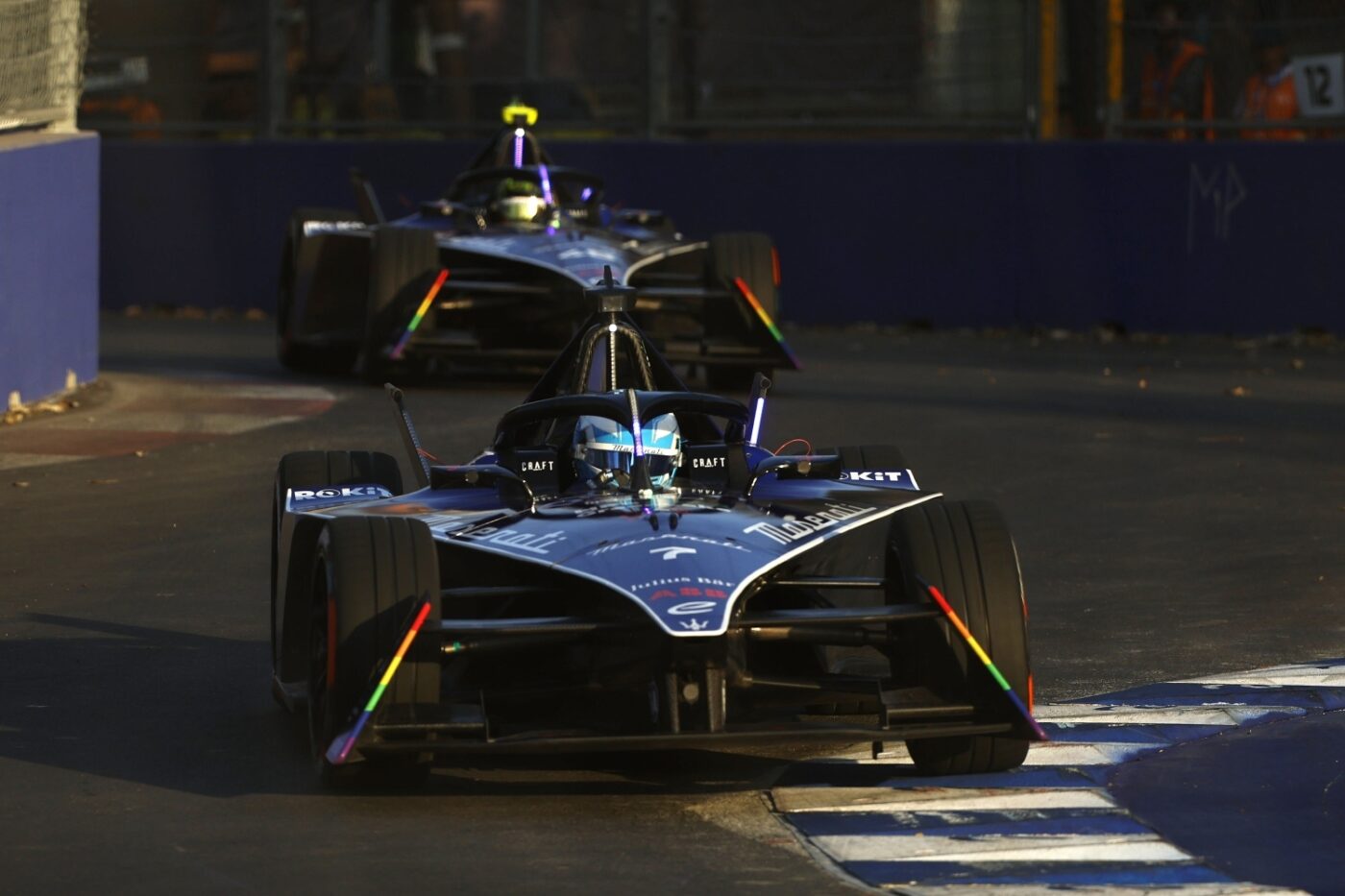
But just because Formula E is rising in popularity and electrification is the order of the day for car manufacturers doesn’t mean that traditional, petrol-powered motorsports are going away any time soon. Far from it.
“The immediate future will see us get to a side by side,” Sgro speculates, “but I think eventually, electrification is going to get to a point [where it takes over]. I mean, look at what Formula E has done in the last ten years: the cars have gotten faster and they’ve gotten more efficient. The shape and the design have gotten more intriguing and closer to Formula 1… And I think that the speed and the performance on track with the drivers is going to be very similar to Formula 1 in the near future.”
“And I say that that’s where I think there’ll be parallels… It’s not so much a question about sustainability, although it obviously [Formula E] plays into that. But I think more and more individuals who are entertained by [petrol-powered] motorsports are going to be attracted by the innovation and technology that Formula E can bring.”
Giovanni Sgro
Maserati, at least, is hedging its bets. At the same time that they joined Formula E, they also announced a return to sportscar racing, unveiling a GT2 variant of their MC20 production sports car as well as the Project24, a limited-production ‘track day special’. Other car brands that compete in Formula E, such as Porsche and Nissan, are still heavily present in petrol motorsports (including customer racing) too.
For the foreseeable future, ICE and EV race cars will coexist, as there are many categories of motorsports that EV race cars are currently ill-prepared for. For example, endurance racing: the enormous distances and need for speedy pit stops endurance racing demands mean that it’ll be a while before we see full EVs take the 24 Hours of Daytona or Le Mans.
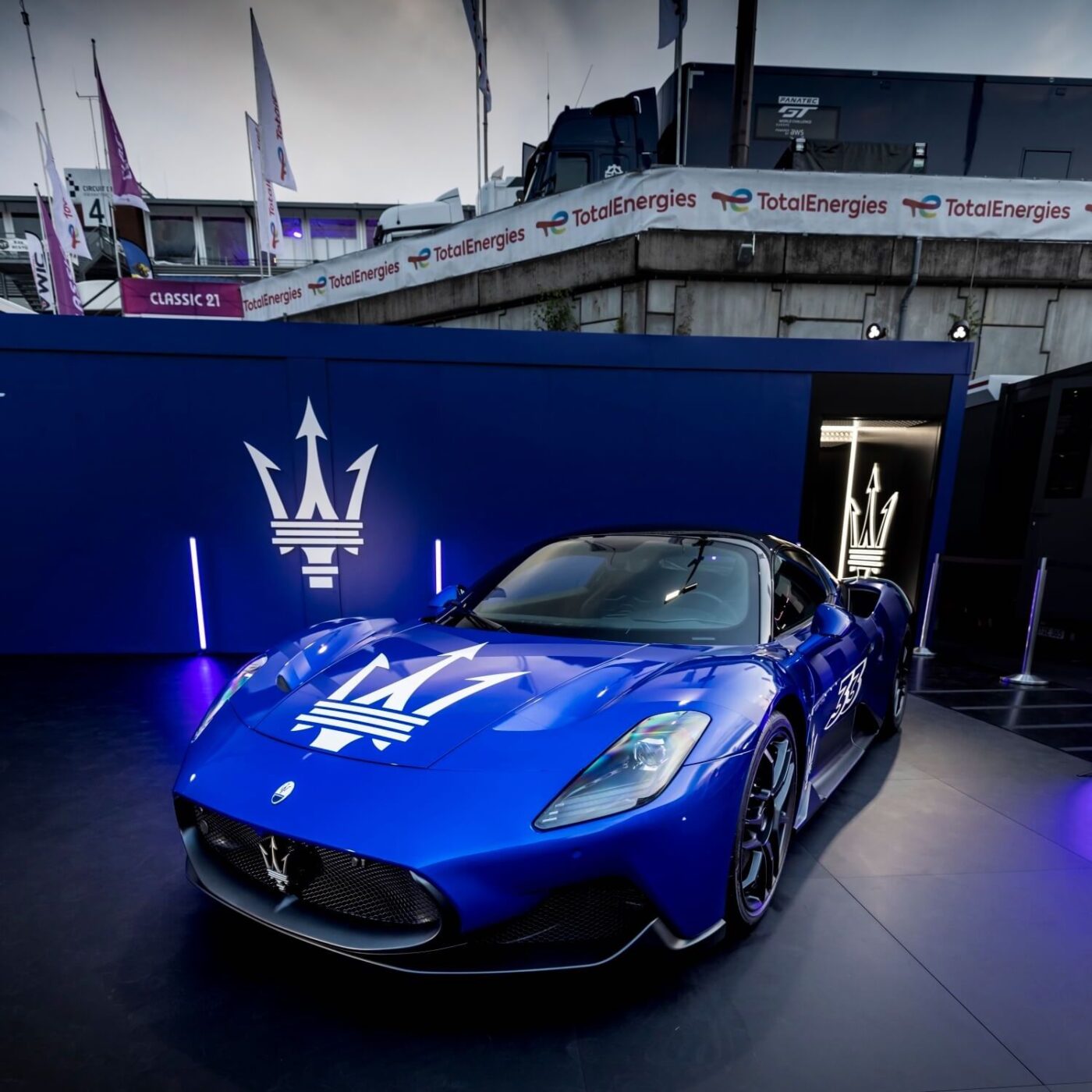
Of course, hybrid sports cars have long been the norm in many of the most competitive categories of motorsports. If we’re talking endurance racing, hybrid powertrains have been de rigueur for Le Mans prototypes since the 2010s, and F1 cars have run hybrid engines since 2014 and will do so long into the 2030s.
But as EV technology gets better and better – and EVs become more commonplace on our roads, motorsports will grow to reflect that. “I think that in the next 50 years, motorsports will be all-electric,” Sgro predicts.
The emotional aspect
It really feels like Formula E has kicked off an exciting new era; a renaissance for motorsport. The rapid pace of innovation, the return of iconic brands to racing, and going racing in places around the world that have traditionally been ignored by motorsport… It feels very exciting. It’s a breath of fresh air.
At the same time, it feels like for some of these car brands who’ve joined Formula E, it’s almost a return to their roots – to an era where motorsports were at the bleeding edge of technology. Getting involved in FE, then, is about staying true to their history and staying relevant to modern audiences.
Indeed, for Sgro, racing in Formula E is about honouring Maserati’s legacy:
“Maserati is a brand that was born in 1914, which started racing in 1926… And all of a sudden here we are in Formula E… When you have 100 years of racing DNA, you have a sense of responsibility in terms of everything you do when it comes to performing on track.”
Giovanni Sgro
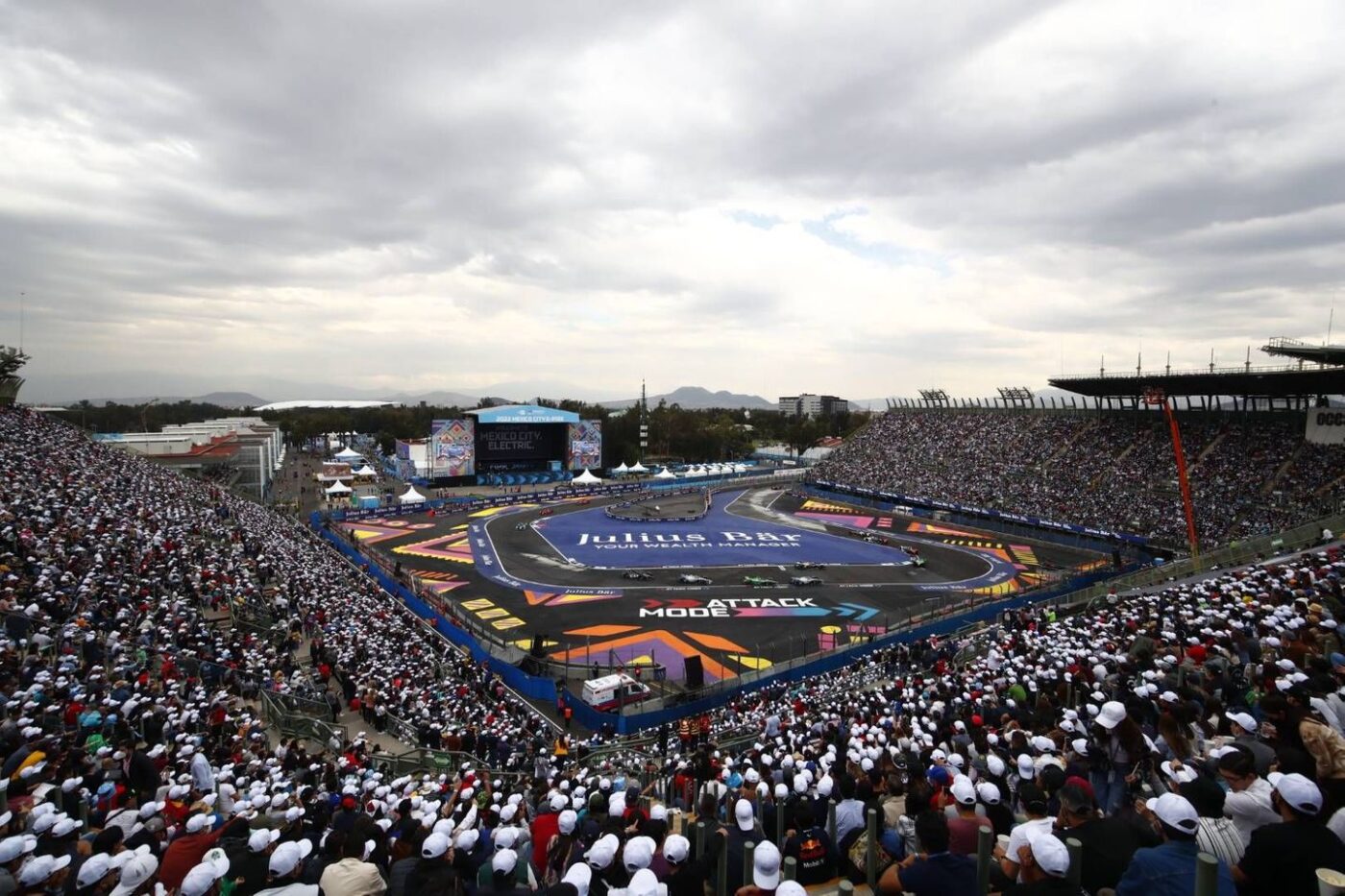
If there’s one word you could use to sum up Formula E, it’s responsibility: both in terms of figuring out how to make the sports we love better for the planet and more sustainable, but also in terms of staying true to what makes the sports we love so engaging in the first place.
Formula E ticks both those boxes. Not only is it one of the most fun motorsports to watch on the planet, but at almost every level, it’s inspiring so much innovation and progress when it comes to sustainability.
Who knew burning rubber could be so guilt-free?The post How Formula E Has Sparked A Renaissance For Motorsport appeared first on DMARGE.
0 Commentaires